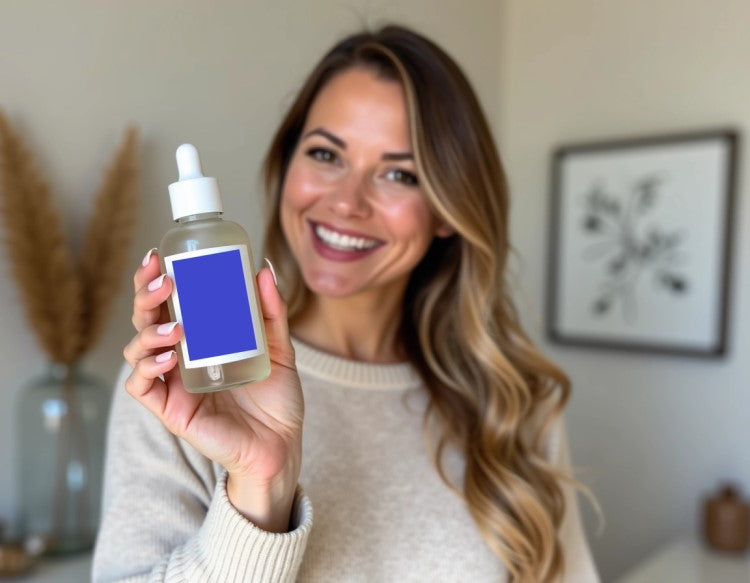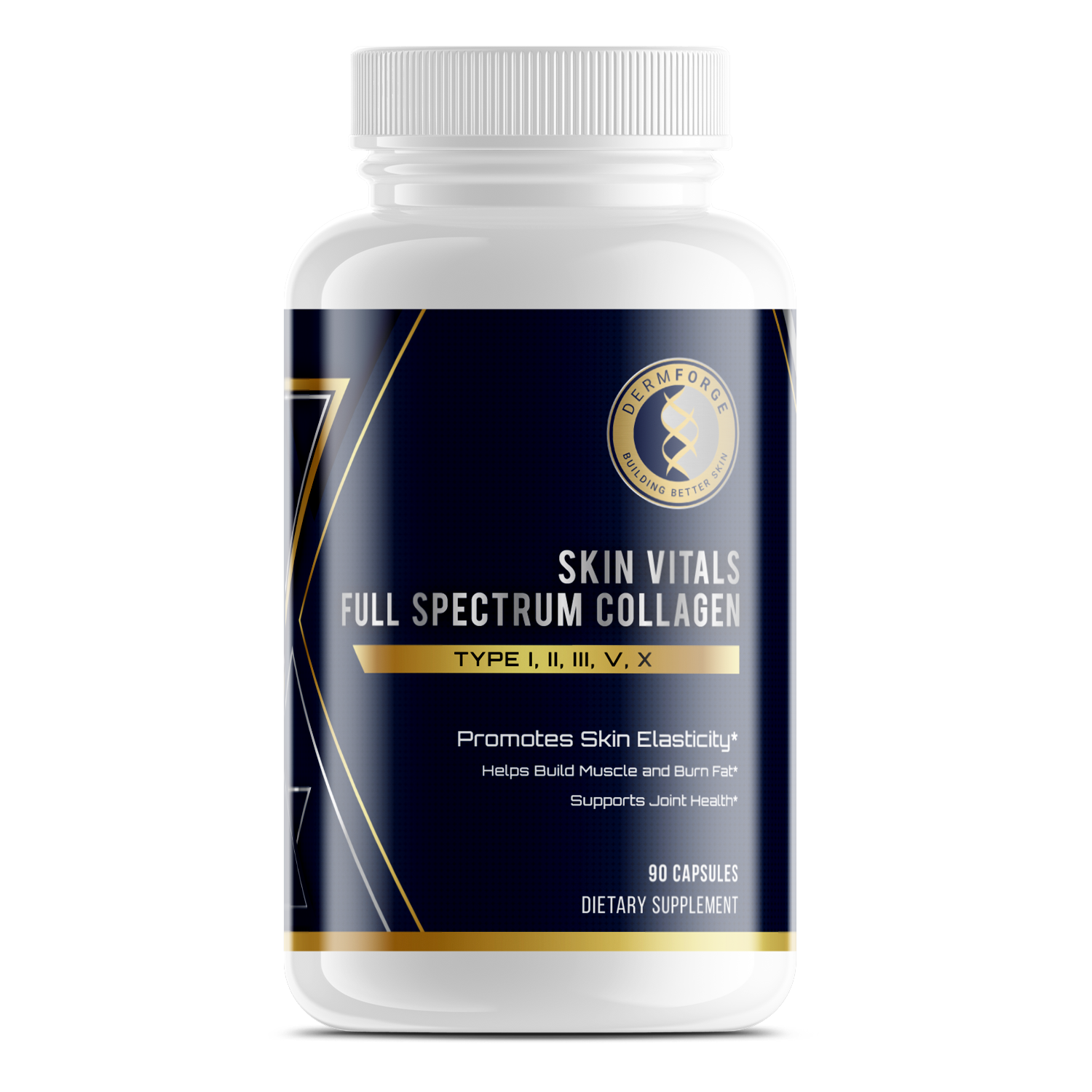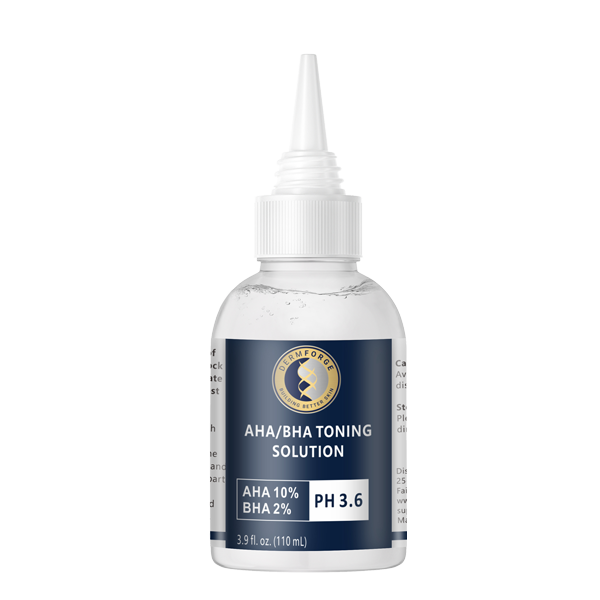Glycolic acid toners have become a staple in many skincare routines. They offer effective exfoliation and promote a brighter complexion. By gently removing dead skin cells, these toners help reveal fresher, smoother skin. Additionally, they can aid in reducing the appearance of fine lines and uneven pigmentation. However, it's important to choose a toner that suits your skin type and concerns. Starting with a lower concentration is advisable, especially if you have sensitive skin.
Understanding glycolic acid toners can help you make informed decisions for your skincare regimen. Always monitor your skin's response and adjust usage as needed. Incorporating glycolic acid toners thoughtfully can lead to noticeable improvements in your skin's appearance. Remember to apply sunscreen daily, as glycolic acid can increase sun sensitivity. By following these guidelines, you can enjoy the benefits of glycolic acid toners while maintaining healthy, balanced skin.
What is Glycolic Acid?
Glycolic acid is a colorless, odorless crystalline compound. It naturally occurs in sugarcane and other sources. In skincare, glycolic acid is valued for its exfoliating properties. It helps remove dead skin cells, promoting a brighter complexion. This makes it a common ingredient in products like glycolic acid toners.
As the smallest molecule in the alpha hydroxy acid (AHA) family, glycolic acid penetrates the skin more effectively than other AHAs. This allows it to work efficiently in exfoliating and rejuvenating the skin. AHAs, including glycolic acid, are water-soluble acids derived from natural sources. They are commonly used in skincare for their ability to improve skin texture and tone.
Incorporating glycolic acid into your skincare routine can offer several benefits. It aids in reducing the appearance of fine lines and uneven pigmentation. Additionally, it can help manage acne by preventing clogged pores. However, it's important to use glycolic acid products as directed to avoid potential skin irritation. Starting with lower concentrations and gradually increasing usage can help your skin adjust. Always apply sunscreen during the day, as AHAs can increase sun sensitivity.
Understanding glycolic acid toners can help you make informed decisions about your skincare regimen. By choosing products that suit your skin type and concerns, you can effectively harness the benefits of this AHA. Remember to monitor your skin's response and consult with a dermatologist if you have any concerns.
How Glycolic Acid Toners Work
Glycolic acid toners function as chemical exfoliants, effectively removing dead skin cells from your skin's surface. They work by dissolving the bonds that hold these cells together, allowing them to shed naturally. This process reveals fresher, more radiant skin beneath. Unlike physical exfoliants, which use abrasive materials, chemical exfoliants offer a gentler approach. Therefore, they reduce the risk of microtears and irritation.
Regular use of glycolic acid toners can lead to noticeable improvements in skin texture and tone. By promoting the shedding of dead skin cells, these toners help smooth rough patches and diminish the appearance of fine lines. Additionally, they can fade hyperpigmentation, resulting in a more even complexion. As cell turnover increases, your skin appears brighter and more youthful. However, it's important to monitor your skin's response and adjust usage accordingly.
Understanding glycolic acid toners involves recognizing their role in accelerating cell turnover. By enhancing this natural process, these toners support the production of new skin cells. This leads to a rejuvenated appearance over time. However, increased cell turnover can make your skin more sensitive to sunlight. Therefore, it's advisable to apply sunscreen daily when using glycolic acid products. This practice helps protect your skin from potential UV damage.
Incorporating a glycolic acid toner into your skincare routine can offer multiple benefits. However, it's essential to use them correctly to avoid irritation. Start with a lower concentration to assess your skin's tolerance. Gradually increase usage as your skin adapts. Always follow up with a moisturizer to maintain hydration. By taking these steps, you can enjoy the advantages of glycolic acid toners while maintaining healthy skin.
Key Benefits of Using Glycolic Acid Toners
Glycolic acid toners offer several benefits for your skin. They exfoliate, brighten, and reduce imperfections. By incorporating them into your skincare routine, you can achieve a smoother, more radiant complexion.
Regular use of glycolic acid toners promotes exfoliation, leading to smoother skin. They work by gently removing dead skin cells from the surface. This process reveals fresher skin underneath. As a result, your skin feels softer and looks more refined. Additionally, this exfoliation can help prevent clogged pores, reducing the likelihood of breakouts.
In addition to smoothing the skin, glycolic acid toners brighten and even out skin tone. They fade dark spots and hyperpigmentation by accelerating cell turnover. This leads to a more uniform complexion. Over time, you may notice a reduction in discoloration and a brighter overall appearance. Therefore, incorporating a glycolic acid toner can be beneficial for those seeking a more radiant look.
Furthermore, glycolic acid toners help reduce fine lines, acne scars, and hyperpigmentation. By promoting collagen production, they improve skin elasticity and diminish the appearance of fine lines. They also assist in fading acne scars and other forms of hyperpigmentation. Consequently, your skin achieves a more youthful and even appearance. Understanding glycolic acid toners can aid in selecting the right product for your skincare needs.
Incorporating glycolic acid toners into your routine can lead to significant improvements in skin texture and tone. However, it's important to use them appropriately to avoid irritation. Start with a lower concentration and gradually increase as your skin builds tolerance. Always apply sunscreen during the day, as glycolic acid can increase sun sensitivity. By following these guidelines, you can enjoy the benefits of glycolic acid toners while maintaining healthy skin.
Who Should (and Shouldn’t) Use Glycolic Acid Toners?
Glycolic acid toners can benefit various skin types, particularly those with oily or combination skin. They help manage excess oil and improve skin texture. Additionally, individuals dealing with acne scars or hyperpigmentation may find these toners effective in evening out skin tone. However, it's important to assess your skin's specific needs before incorporating such products.
If you have sensitive skin, rosacea, or a compromised skin barrier, exercise caution with glycolic acid toners. These conditions can make your skin more prone to irritation. Therefore, introducing glycolic acid slowly and at lower concentrations is advisable. Monitor your skin's response closely to prevent adverse reactions. Additionally, always perform a patch test before full application.
Understanding glycolic acid toners involves recognizing their exfoliating properties. While beneficial for many, they may not suit everyone. If you experience persistent irritation or discomfort, discontinue use and consult a dermatologist. They can provide guidance tailored to your skin's needs. Remember, everyone's skin reacts differently, so personal observation is key.
How to Incorporate Glycolic Acid Toners into a Skincare Routine
Incorporating glycolic acid toners into your skincare routine requires careful consideration. Begin by cleansing your face thoroughly to remove impurities. Then, apply the glycolic acid toner using a cotton pad, gently swiping it across your skin. It's advisable to use the toner in the evening, as glycolic acid can increase sun sensitivity. After application, allow the toner to absorb before proceeding with your moisturizer. This sequence ensures optimal effectiveness and minimizes potential irritation.
When introducing glycolic acid toners, start with a frequency of two to three times per week. Observe how your skin responds during this period. If well-tolerated, you can gradually increase usage to nightly applications. However, always monitor for signs of irritation, such as redness or excessive dryness. Additionally, avoid using glycolic acid toners in conjunction with other strong acids or retinoids, as this combination can lead to over-exfoliation and sensitivity. Therefore, it's best to alternate these products on different nights.
Common mistakes to avoid include overusing the toner in an attempt to accelerate results. Overuse can compromise your skin barrier, leading to irritation. Additionally, be cautious when layering products. Combining glycolic acid with certain ingredients, like vitamin C or benzoyl peroxide, can cause adverse reactions. Understanding glycolic acid toners and their interactions is essential for maintaining skin health. Always apply sunscreen during the day, as glycolic acid increases sun sensitivity. By following these guidelines, you can effectively incorporate glycolic acid toners into your routine while minimizing potential risks.
Choosing the Right Glycolic Acid Toner for Your Skin
Selecting the right glycolic acid toner involves evaluating factors such as concentration, pH levels, and additional ingredients. Typically, glycolic acid toners contain concentrations ranging from 5% to 10%. For beginners or those with sensitive skin, starting with a lower concentration is advisable to minimize potential irritation. As your skin builds tolerance, you may consider products with higher concentrations for enhanced exfoliation.
The effectiveness of glycolic acid is also influenced by the product's pH level. A pH between 3 and 4 is generally optimal, as it allows the acid to exfoliate effectively without causing excessive irritation. However, products with lower pH levels can be more potent and may lead to increased sensitivity. Therefore, it's important to choose a toner with a pH level that aligns with your skin's tolerance.
Additionally, consider the presence of soothing ingredients like aloe vera, hyaluronic acid, or glycerin in the toner. These components can help mitigate potential dryness or irritation caused by glycolic acid. For instance, some toners combine glycolic acid with hydrating agents to balance exfoliation with moisture retention. This combination can be beneficial for maintaining skin hydration while achieving exfoliation.
When comparing products, both budget-friendly and premium options are available. Affordable toners often provide effective exfoliation without unnecessary additives, making them suitable for those new to glycolic acid. On the other hand, premium products may offer additional benefits, such as advanced formulations or inclusion of high-quality ingredients. Understanding glycolic acid toners and their varying features can assist you in making an informed choice that aligns with your skincare goals and budget.
Choosing the right glycolic acid toner requires careful consideration of concentration, pH level, and additional ingredients. By assessing these factors in relation to your skin type and concerns, you can select a toner that effectively enhances your skincare routine. Always monitor your skin's response and adjust usage as needed to maintain skin health.
Conclusion
Understanding glycolic acid toners can significantly enhance your skincare routine. By promoting gentle exfoliation, these toners help reveal smoother, more radiant skin. Regular use can improve skin texture and tone. However, it's essential to choose a product that aligns with your skin type and concerns. Starting with a lower concentration is advisable, especially if you have sensitive skin. Additionally, always monitor your skin's response to new products.
Incorporating glycolic acid toners thoughtfully can lead to noticeable improvements in your skin's appearance. Remember to apply sunscreen daily, as glycolic acid can increase sun sensitivity. By following these guidelines, you can enjoy the benefits of glycolic acid tonersGlycolicAcid Exfoliation while maintaining healthy, balanced skin.






